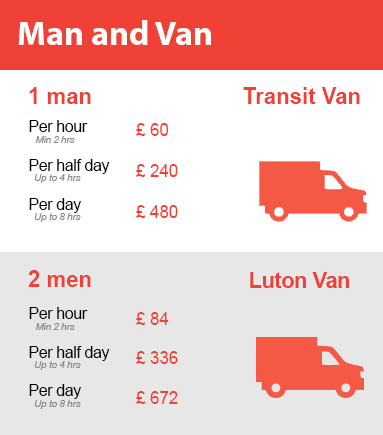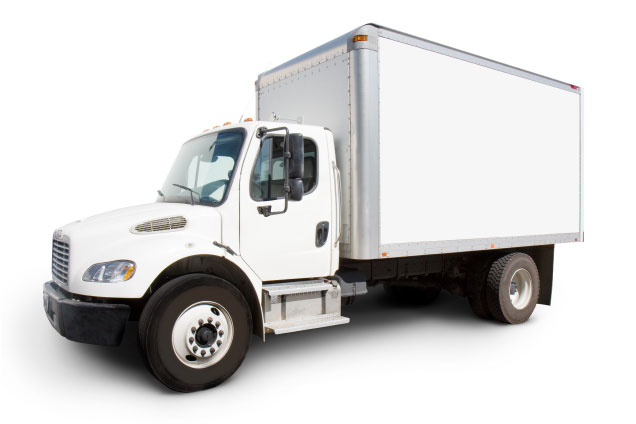Innovative Tips for Lifting Heavy Objects Alone
Posted on 22/05/2025
Innovative Tips for Lifting Heavy Objects Alone
Lifting heavy objects alone is often unavoidable, whether you're rearranging furniture, moving homes, or simply finding a routine task that requires some muscle. However, lifting heavy loads can put your body at risk for strains, sprains, and more serious injuries if done improperly. Fortunately, there are innovative techniques and tools you can use to make the process safer and more efficient. This comprehensive guide explores modern solutions and expert tips for single-person heavy lifting, so you can move bulky items confidently and without harm.

Understanding the Risks of Solo Heavy Lifting
Before exploring tips for lifting heavy objects alone, it's crucial to understand why proper technique matters:
- Musculoskeletal injuries: Back strains, hernias, and joint injuries commonly result from improper lifting.
- Fatigue: Lifting alone can exhaust your muscles, leading to mistakes or accidental drops.
- Property damage: Heavier loads are hard to control, and mishandling may cause damage to walls, floors, or the items themselves.
By recognizing these risks, you can better appreciate the value of employing innovative lifting methods when handling heavy items independently.
Essential Preparation for Safe, Solo Lifting
Effective preparation forms the core of all successful heavy lifting. Here's a step-by-step guide you should follow before attempting to move any hefty item alone:
1. Assess the Load
- Check the object's weight: Is it too heavy for a single person? As a rule of thumb, avoid solo lifting above 50 pounds (approximately 23 kilograms).
- Examine the shape: Oddly shaped items may require special handling or equipment.
- Identify fragile parts: Know where the object is most vulnerable.
2. Wear Appropriate Clothing and Gear
- Non-slip footwear: Improves stability and minimizes tripping hazard.
- Gloves: Protect your hands and enhance grip.
- Back support belt: Offers lower back protection, especially useful for single-person lifting.
3. Clear the Path
- Remove obstacles and clutter between your start and end points.
- Check doorway widths and floor surfaces for easy passage.
- Have your destination prepped and ready.
Innovative Solo Lifting Tools and Equipment
Incorporating simple yet effective equipment is one of the wisest approaches to lifting heavy objects by yourself. These tools multiply your strength, improve safety, and streamline the moving process:
1. Lifting Straps & Forearm Forklifts
- Lifting straps (commonly called Forearm Forklifts) allow you to harness the power of leverage. By looping straps under a heavy object and around your arms or shoulders, you can make lifting and maneuvering bulkier loads easier--even alone. These can dramatically reduce back strain as they distribute weight more evenly.
2. Dollies and Hand Trucks
- A moving dolly or hand truck is indispensable. Simply slide the platform underneath the object, tip back, and roll it to your destination. Look for versions with large pneumatic wheels for greater stability on tougher terrain.
3. Furniture Sliders
- Furniture sliders are one of the simplest yet most innovative helpers for moving heavy objects solo. Place these discs under furniture legs or corners to reduce friction and make sliding objects across floors nearly effortless. They work best on carpet or hardwood and help minimize floor damage.
4. Portable Lifting Jacks
- Smaller jacks aren't just for automotive work. Portable lifting jacks can elevate one side of a heavy appliance or piece of furniture, allowing you to reposition sliders, wheels, or adjust your grip without straining yourself.
5. Mechanical Stair-Climbing Carts
- If you need to move heavy objects up or down stairs alone, consider mechanical stair-climbing carts. These innovative devices employ rotating wheels or powered tracks to make stair-navigation safer and more manageable than ever before.
Innovative Techniques for Solo Lifting
Alongside specialized equipment, certain modern lifting techniques can help you move large objects more easily without assistance:
1. Utilize the Leverage Principle
- Use a sturdy object like a crowbar or a long plank as a lever. Place the fulcrum (pivot point) close to the object's base. Apply force on the opposite side to lift or shift the load in small increments, reducing the amount of physical effort needed.
2. Roll Instead of Lift
- When practical, tip a heavy item onto its edge or corner and gently roll or pivot it across the floor. This drastically reduces the amount of lifting required, placing less strain on your body. Protect the floor with blankets or sliders to prevent scratches.
3. Break Down and Reassemble When Possible
- Many heavy items, such as furniture or appliances, can be partially disassembled for easier moving. Remove drawers, shelves, doors, or detachable parts first. Not only does this lighten the load, but it can also make the object more maneuverable through tight spaces.
4. Push, Don't Pull
- Pushing heavy objects is generally safer than pulling, as it allows you to engage more powerful leg and core muscles, reducing the risk of injury. Use your body weight and lean into the movement for added momentum.
5. Use the "High-Low" Carry Method
- For tall or vertical objects (like bookshelves or dressers), tilt the object so one end is higher than the other. Grip the higher end with one hand and the lower end with the other, holding the object at a slight diagonal. This provides greater balance and control when lifting solo and passing through doorways or hallways.
6. The Backpack Method
- For bags of soil, grain, or other compact loads, squat down and pull the object onto your thighs, then slide it onto your back as if putting on a backpack. Stand slowly using your legs. This technique keeps the heavy item close to your center of gravity and minimizes back stress.
Proper Body Mechanics: How to Protect Yourself
Whether using equipment or not, the single most important factor in lifting heavy items alone is maintaining proper body mechanics. Here's how you can optimize every movement:
- Squat, don't bend: Always lower yourself by bending your knees--not your waist--when picking up an object from the floor.
- Keep the load close: Hold the object as close to your torso as possible, keeping your elbows tucked in to prevent strain.
- Use your legs: The power for lifting should come from your strongest muscles--your legs and hips--not your back.
- Stand upright: Keep your back straight and avoid twisting while lifting or carrying. If you must turn, move your feet, not your torso.
- Stagger your feet: Placing one foot slightly ahead of the other increases stability and balance.
- Breathe steadily: Inhale deeply before you lift and exhale as you rise, to help stabilize your core.
Creative Solutions for Overcoming Common Lifting Challenges
Problem: The Object Is Too Heavy to Safely Lift Alone
- Solution: Always prioritize safety over speed. If it's genuinely too heavy, consider removing parts, using a jack to raise one side at a time, or investing in a more advanced dolly. Never risk injury by exceeding your physical limits.
Problem: Navigating Narrow Hallways or Doorways
- Solution: Measure both the object and intended passageways beforehand. Disassemble the object or turn it on its side to fit through tight spots. Furniture sliders or moving blankets under the object can aid maneuverability.
Problem: Moving on Stairs
- Solution: Use a stair-climbing cart designed to bear weight while traversing steps. If not available, move slowly, keeping the load low and ensuring each step is secure before proceeding. Never rush or move more than you can confidently handle.
Problem: Protecting Floors and Walls
- Solution: Lay down old blankets, cardboard, or carpet remnants along the moving path. Use corner guards for wall protection, especially when sliding or pivoting larger items.
Top Mistakes to Avoid When Lifting Heavy Items Alone
When handling heavy objects solo, it's easy to overlook safety in the excitement (or stress) of moving. Be mindful of these common mistakes:
- Rushing: Take your time. Speed increases the risk of mistakes and injury.
- Poor planning: Skipping a walk-through of your lift path or not pre-measuring objects makes everything harder and riskier.
- Improper grip: Always ensure your hands (and gloves) are dry and your grip is solid before lifting.
- Lifting with your back: This can quickly lead to strains or serious injury. Always squat and lift with your legs.
- Neglecting tools: Trying to 'muscle through' without sliders, dollies, or straps isn't just needlessly tough--it's dangerous.
- Lifting objects above shoulders: Never attempt to lift or place a heavy item above your head alone.
After the Lift: Self-Care and Recovery
Even after a successful move, your body needs proper care to recover:
- Stretch: Gentle stretching post-lift helps prevent muscle tightness.
- Hydrate: Drink plenty of water to replace fluids lost during strenuous activity.
- Rest: Allow muscles time to recover between major lifts, especially if you don't lift often.
- Watch for warning signs: Monitor for lingering pain, swelling, or numbness--these may indicate a strain or more serious injury.

Bonus: Smart Home Lifting Tech and Automation
Emerging technologies are changing the way people lift heavy objects alone. Consider these smart innovations:
- Motorized lifting platforms: Portable platforms that raise heavy items at the push of a button.
- Self-driving moving robots: Some moving companies offer automated dollies that can navigate stairs and tight corners autonomously.
- Voice-activated lifts: Home lifts that operate via voice command to assist with heavy loads for those with mobility challenges.
Conclusion: Move Heavy Objects Solo--Safely and Smartly
Moving or lifting heavy items alone doesn't have to be intimidating or dangerous. With innovative tools, creative problem-solving, proper planning, and proven lifting techniques, it's possible to tackle even the biggest jobs by yourself. Always prioritize safety: use your legs, protect your back, and let modern technology do the heavy lifting when you can. Whether you're a homeowner, renter, or DIY enthusiast, mastering these strategies ensures a safer, more efficient, and more confident experience every time you need to move something heavy on your own.





